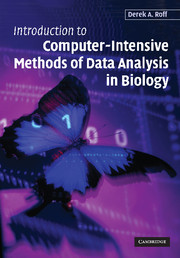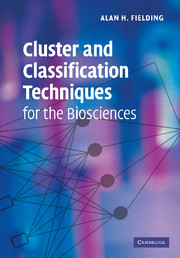Introduction to Computer-Intensive Methods of Data Analysis in Biology
This 2006 guide to the contemporary toolbox of methods for data analysis will serve graduate students and researchers across the biological sciences. Modern computational tools, such as Maximum Likelihood, Monte Carlo and Bayesian methods, mean that data analysis no longer depends on elaborate assumptions designed to make analytical approaches tractable. These new 'computer-intensive' methods are currently not consistently available in statistical software packages and often require more detailed instructions. The purpose of this book therefore is to introduce some of the most common of these methods by providing a relatively simple description of the techniques. Examples of their application are provided throughout, using real data taken from a wide range of biological research. A series of software instructions for the statistical software package S-PLUS are provided along with problems and solutions for each chapter.
- Each chapter has exercises and solutions which allow the reader to check their understanding
- Real biological data examples are used throughout to demonstrate the applications of the techniques
- Provides S-Plus coding so that the reader can carry out the statistical tests described
Product details
May 2006Paperback
9780521608657
378 pages
244 × 170 × 20 mm
0.6kg
48 b/w illus. 30 tables
Available
Table of Contents
- 1. An introduction to computer intensive methods
- 2. Maximum likelihood
- 3. The Jack-knife
- 4. The Bootstrap
- 5. Randomisation
- 6. Regression methods
- 7. Bayesian methods
- References
- Exercises
- Appendix A: an overview of S-Plus methods used in this book
- Appendix B: brief description of S-Plus subroutines used in this book
- Appendix C: S-Plus codes cited in text.






